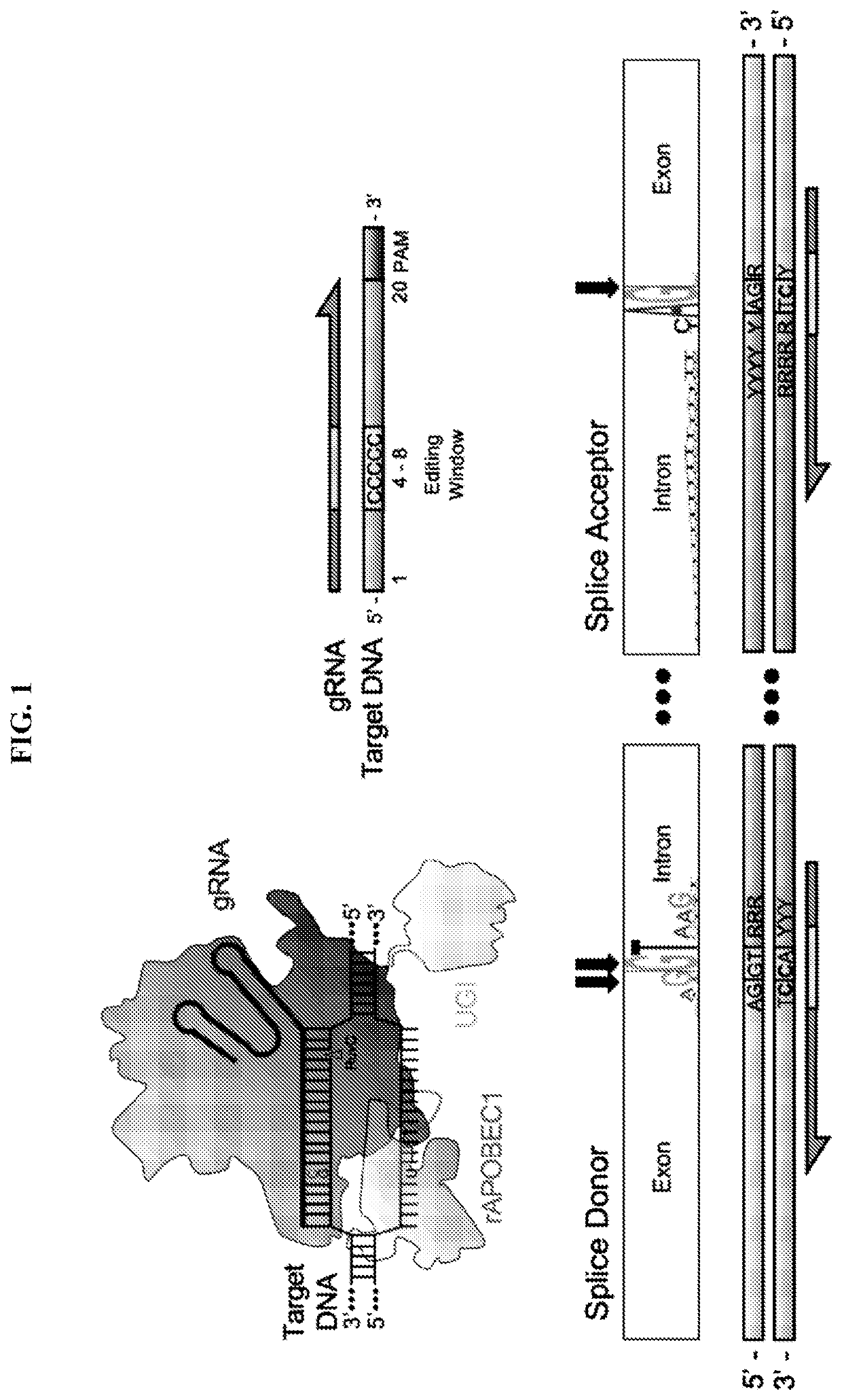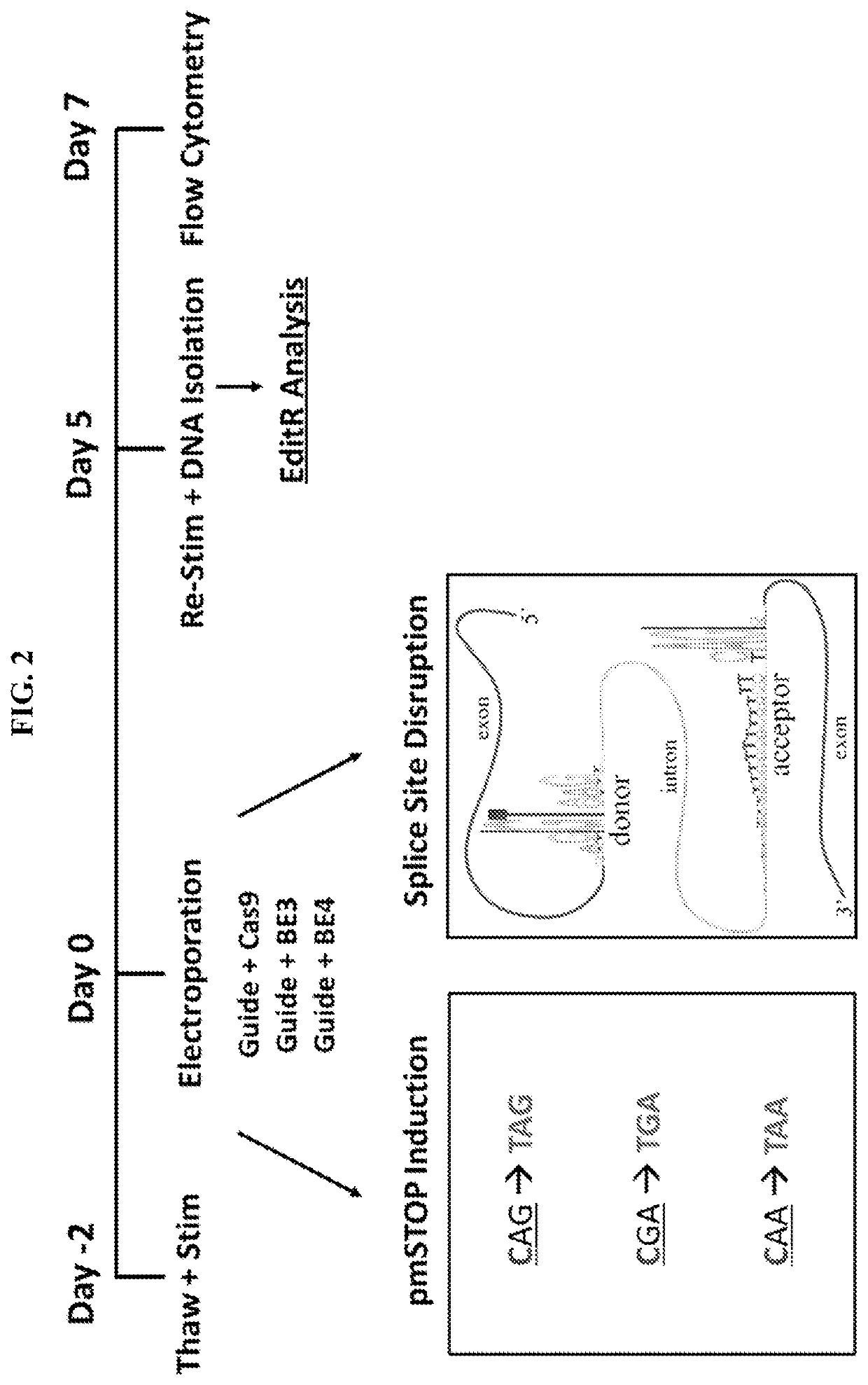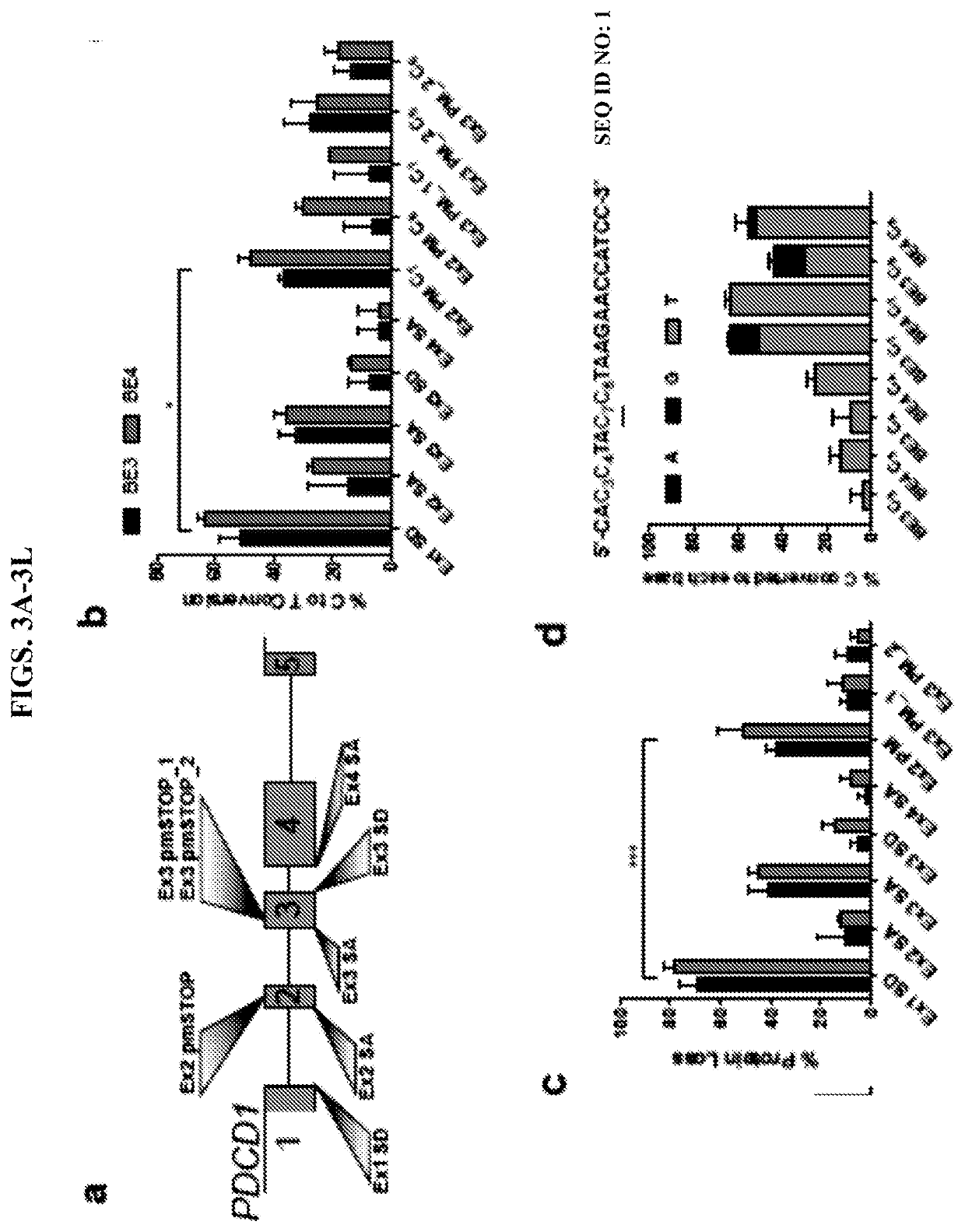Lymphohematopoietic engineering using cas9 base editors
a technology of cas9 base and hematopoietic engineering, applied in the field of precise modulation of primary human cells, can solve the problems of undesirable genotoxicity, forming potentially oncogenic gross chromosomal translocations, and less efficient precision of single nucleotide alteration by hdr
- Summary
- Abstract
- Description
- Claims
- Application Information
AI Technical Summary
Benefits of technology
Problems solved by technology
Method used
Image
Examples
example 1
Splice Site Base Editing
[0063]Base editing has been previously used to induce premature stop (pmSTOP) codons for gene knockout in mice and in mammalian cells15-18. However, we reasoned that splice site disruption could have several advantages over induction of pmSTOP codons (FIG. 1). For instance, stop codon read-through has been shown to occur at frequencies up to 31% in some genes, and can be promoted under conditions of cellular stress19, 20. Splice site editing mitigates this concern as it alters gene processing at the RNA level21, which is less likely to be bypassed at the translational level. Additionally, current base editors do not produce strict C to T edits, with even the most recent base editors producing up to 25% non-target editing (C to G / A)22. In the context of pmSTOP, non-target edits preclude premature stop codon formation, thereby lowering the efficiency of protein knockout, and instead create potentially undesirable amino acid changes.
[0064]To assess the performan...
example 2
Base Editing in Natural Killer (NK) Cells
[0097]Methods
[0098]Isolation of peripheral blood mononuclear cells (PBMCs): Peripheral blood was diluted 3:1 with chilled 1× PBS. The diluted blood was added dropwise over 15 mL of Lymphoprep (Stem Cell Technologies). Cells were centrifuged at 400×g for 25 minutes with no brake. The buffy coat was removed and washed with chilled 1× PBS and centrifuged at 400×g for 10 minutes. The supernatant was removed and cells were either frozen as PBMCs or used immediately to purify NK cells.
[0099]Isolation of CD3−CD56+ NK Cells: Density of PBMCs was adjusted to 5×107 cells / mL and cells were transferred to a 14 mL polystyrene round-bottom tube. NK Cells were isolated using the Human NK Cell Enrichment Kit or the Human NK Cell Isolation Kit (Stem Cell Technologies) following kit instructions. Enriched cells were counted and analyzed for purity (% CD56+, % CD3+) by flow cytometry.
[0100]Stimulation of CD3-CD56+ NK cells: CD3-CD56+ NK cells were counted and p...
example 3
Base Editing in Primary Fibroblasts
[0132]Methods
[0133]Cell Culture: Primary fibroblasts from healthy patients or patients with Fanconi's Anemia, or MPS1 were frozen in CryoStor at a concentration of 1×106 cells per mL. Cells were thawed in human primary fibroblast (hFib) media. hFib media consists of 500 mL MEM alpha formulation media (Invitrogen), 5 mL GlutaMAX™ (100×, Invitrogen), 20 mL FBS, 2.5 mL Penicillin-Streptomycin (10000 U / mL, Invitrogen), 5 mL Non-essential Amino Acids (100×, Invitrogen), 500 μL antioxidant supplement (1000×, Sigma-Aldrich), 100 uL mEGF (50 ng / μL Sigma-Aldrich), and 100 uL hFGF (2.5 μg / μL Sigma-Aldrich). Cells were maintained at 70-100% confluency in a 37° C. at 5% CO2 and 5% O2, with media renewal every two days and weekly passaging.
[0134]Transfection of primary fibroblasts: On day −1, fibroblasts at 90-100% confluency were plated at a density of 3×105 cells per well of a 12-well plate. On day 0, media was replaced with 1 mL of 37° C. hFib media. To 100 ...
PUM
| Property | Measurement | Unit |
|---|---|---|
| frequency | aaaaa | aaaaa |
| Conversion frequency | aaaaa | aaaaa |
| Indel frequency | aaaaa | aaaaa |
Abstract
Description
Claims
Application Information
 Login to View More
Login to View More - R&D
- Intellectual Property
- Life Sciences
- Materials
- Tech Scout
- Unparalleled Data Quality
- Higher Quality Content
- 60% Fewer Hallucinations
Browse by: Latest US Patents, China's latest patents, Technical Efficacy Thesaurus, Application Domain, Technology Topic, Popular Technical Reports.
© 2025 PatSnap. All rights reserved.Legal|Privacy policy|Modern Slavery Act Transparency Statement|Sitemap|About US| Contact US: help@patsnap.com



